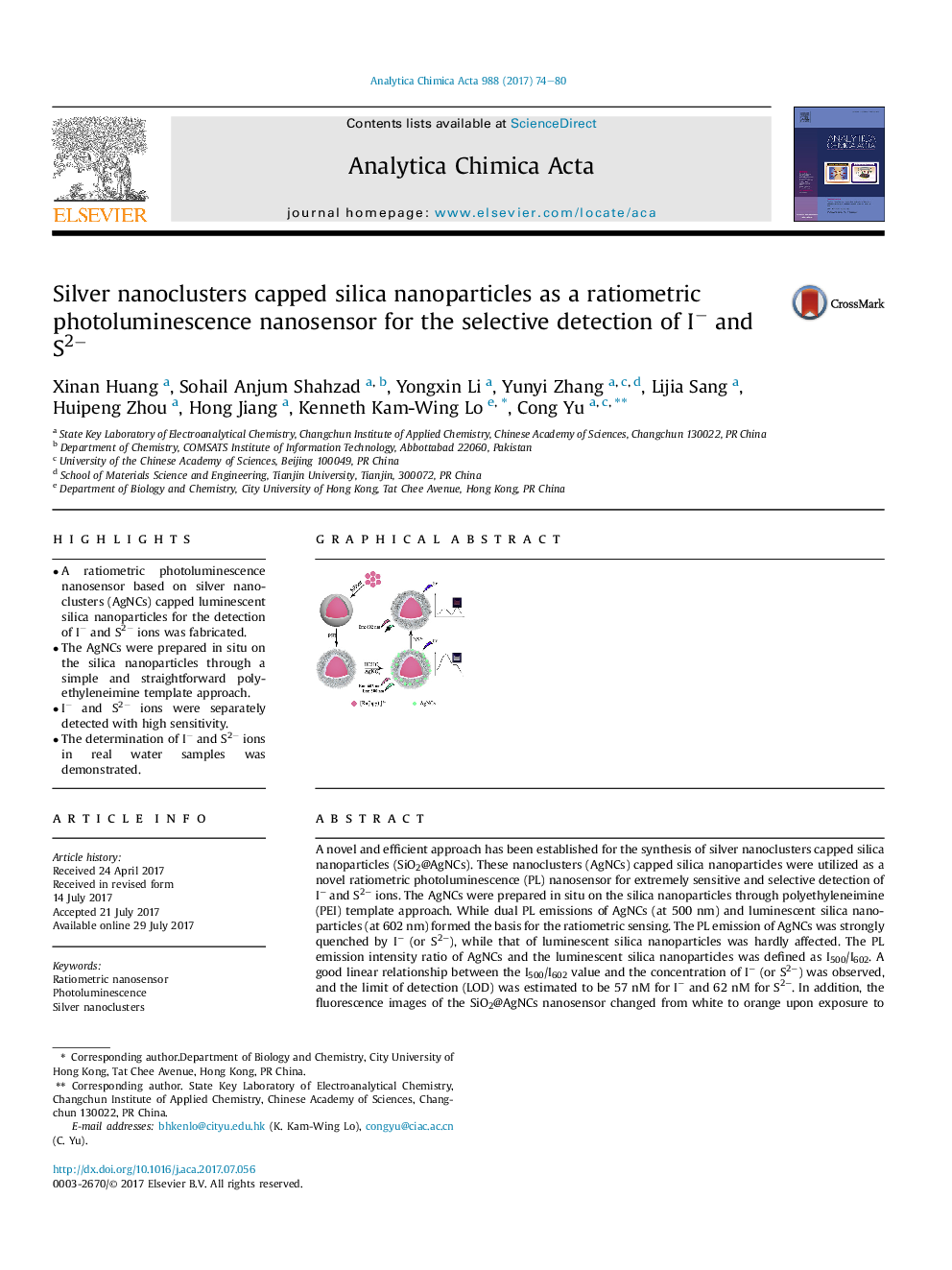| کد مقاله | کد نشریه | سال انتشار | مقاله انگلیسی | نسخه تمام متن |
|---|---|---|---|---|
| 5130633 | 1490844 | 2017 | 7 صفحه PDF | دانلود رایگان |

- A ratiometric photoluminescence nanosensor based on silver nanoclusters (AgNCs) capped luminescent silica nanoparticles for the detection of Iâ and S2â ions was fabricated.
- The AgNCs were prepared in situ on the silica nanoparticles through a simple and straightforward polyethyleneimine template approach.
- Iâ and S2â ions were separately detected with high sensitivity.
- The determination of Iâ and S2â ions in real water samples was demonstrated.
A novel and efficient approach has been established for the synthesis of silver nanoclusters capped silica nanoparticles (SiO2@AgNCs). These nanoclusters (AgNCs) capped silica nanoparticles were utilized as a novel ratiometric photoluminescence (PL) nanosensor for extremely sensitive and selective detection of Iâ and S2â ions. The AgNCs were prepared in situ on the silica nanoparticles through polyethyleneimine (PEI) template approach. While dual PL emissions of AgNCs (at 500 nm) and luminescent silica nanoparticles (at 602 nm) formed the basis for the ratiometric sensing. The PL emission of AgNCs was strongly quenched by Iâ (or S2â), while that of luminescent silica nanoparticles was hardly affected. The PL emission intensity ratio of AgNCs and the luminescent silica nanoparticles was defined as I500/I602. A good linear relationship between the I500/I602 value and the concentration of Iâ (or S2â) was observed, and the limit of detection (LOD) was estimated to be 57 nM for Iâ and 62 nM for S2â. In addition, the fluorescence images of the SiO2@AgNCs nanosensor changed from white to orange upon exposure to different concentrations of Iâ (or S2â) (0-250 μM), which could be clearly distinguished by the naked eye. The SiO2@AgNCs nanosensor exhibited good selectivity against other analytes, and Iâ or S2â ions could be separately detected via the introduction of proper masking agents. Furthermore, the detection of Iâ and S2â in real water samples was also demonstrated.
220
Journal: Analytica Chimica Acta - Volume 988, 2 October 2017, Pages 74-80